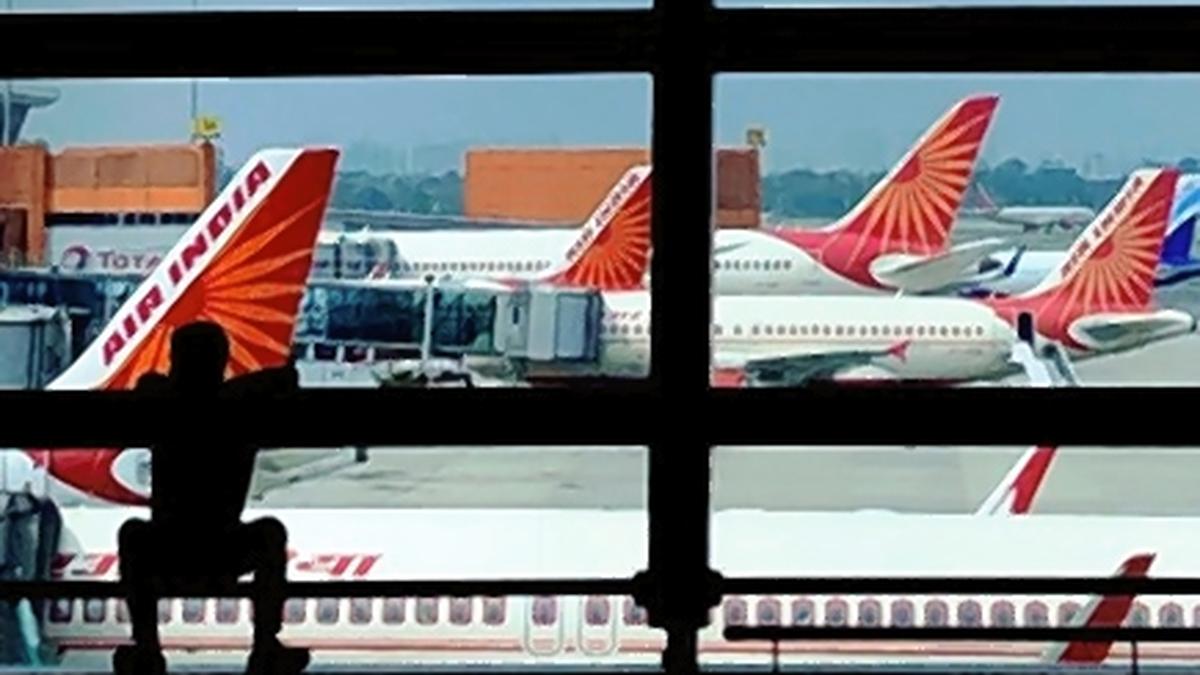Explained | Why is Air India irked with DGCA penalty?

Air India planes are parked at Indira Gandhi International Airport in New Delhi
| Photo Credit: AP
The story so far: Air India has called as excessive the Directorate General of Civil Aviation’s (DGCA) decision to suspend the licence of one of its pilots for a period of three months following the November 26 incident on a New York-Delhi flight where a lady passenger complained that a co-traveller had urinated over her. The incident went without being reported to the DGCA or the accused being handed over to the police. Six airline employees’ unions have also demanded a withdrawal of this ‘harsh’ punishment.
What is the penalty imposed by the DGCA?
On January 20, the DGCA announced a total of three punishments for Air India and two of its personnel for an incident on November 26, 2022 on a New York -Delhi flight where 34-year-old Shankar Mishra, who is in judicial custody, allegedly urinated over a senior citizen lady passenger in a heavily inebriated state but walked away as the airline failed to hand him over to the police after the flight landed. It announced a fine of ₹30 lakh on Air India, suspension of the licence of the pilot-in-command Captain Narayan Ramprasad for three months, and a fine of ₹3 lakh on the director of in-flight services of Air India for failing to discharge her duties.
The incident raised questions not only about a misdemeanour against a lady passenger which can amount to a potential sexual assault going unreported, but also the airline’s protocols in dealing with an incident that can endanger the safety of an aircraft.
What rules form the DGCA’s decision?
The DGCA has cited two important rules to explain its action, of which the first pertains to Civil Aviation Requirement, (Section 3- Air Transport Series M Part VI) which deals with handling of unruly passengers. The rules recognise that an unruly passenger can jeopardise the safety of a flight and lay down the duties of an airline in training its crew and developing SOPs to ensure timely identification of potential unruly passengers at check-in, in the lounges, at the boarding gate or any other place in the terminal building. It requires an airline representative to file an FIR once the aircraft lands with the concerned security agency at aerodrome, to whom, the unruly passenger shall be handed over. The airline is also expected to form an internal committee to probe the incident. The second rule is Rule 141 of the Aircraft Rules, 1937 which defines the responsibility of a pilot-in-command (PIC) who has to “supervise and direct the other members of the crew in the proper discharge of their duties in the flight operations”. In addition to being responsible for the operation and safety of the aircraft during flight time, the PIC is also “responsible for the safety of the passengers and cargo carried and for the maintenance of flight discipline and safety of the members of the crew.”
Why have Air India and employee unions raised objections?
In a public statement on January 24, Air India while calling the DGCA’s punishment for its PIC “excessive” and announcing that it will be providing him assistance to appeal against the decision, explained that it believed its pilot and cabin crew had acted in “good faith” and couldn’t have identified the accused passenger, as unruly since he was “calm, co-operative and did not appear intoxicated to the crew” and that “in the judgment of the crew, the alleged perpetrator posed no risk to flight safety at any time”. It also added that there had been a mutual settlement between the accused and the lady passenger who levelled allegations against him, and there were no eyewitnesses to the incident, and to ask the crew to make a presumption of the accused’s guilt would be “contrary to natural justice”.
The unions asked the DGCA in a joint letter to “withdraw the harsh punishment and suspension” of the PIC as he filed all reports “instantly upon landing” but the Air India management and senior officials failed to act upon them and report the matter to the DGCA within the 12-hour window. They have also raised questions about Air India’s internal committee report on the incident and called it full of “inadequacies and inaccuracies” that also failed to provide the pilots and cabin crew an opportunity to appear before it, therefore, resulting in a “miscarriage of justice”.
But a senior government official closely involved with the matter said, “the pilot and crew can’t act like the judge and the jury. They have to believe the lady passenger and file a complaint and let the police do its job.”
Is the punishment harsh?
Such a punishment is not considered unusual at all. In 2022, according to DGCA data, there were a total 115 enforcement actions against pilots which included warnings in 37 cases, suspensions in 77 cases and withdrawal of licence in one case. A total of 113 cabin crew and seven ATCOs (air traffic control officers) also faced suspensions. The ground for such enforcement action against a pilot can vary from reporting for duty under the influence of alcohol, or flying through turbulence despite being cautioned or flying a plane despite knowledge of a technical glitch and jeopardising the safety of the passengers. “If the DGCA issued a showcause notice to the pilot and found his response inadequate, then the action is justified as the PIC is in-charge of the safety of the aircraft. But we may argue about the quantum of punishment handed out, as the rules don’t define that and the DGCA can arbitrarily decide on that,” said aviation safety expert Mohan Ranganthan. A three-month suspension could set a pilot back by nearly ₹20 lakh-₹24 lakh, while the airline itself has a ₹30 lakh fine.
For all the latest business News Click Here

